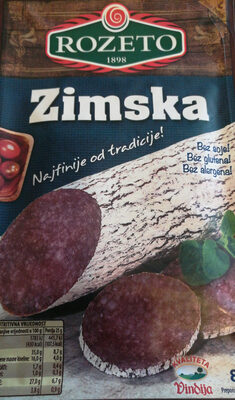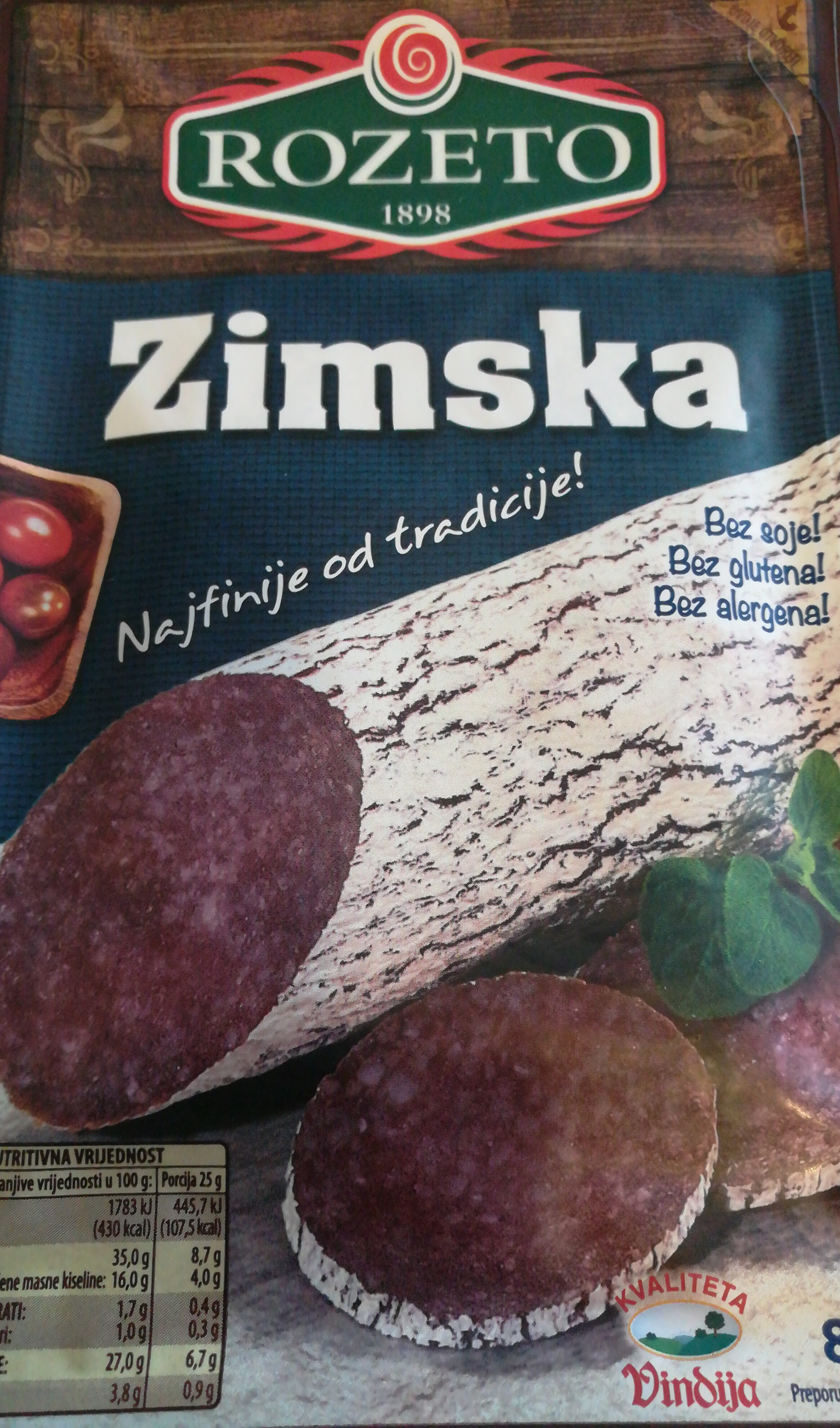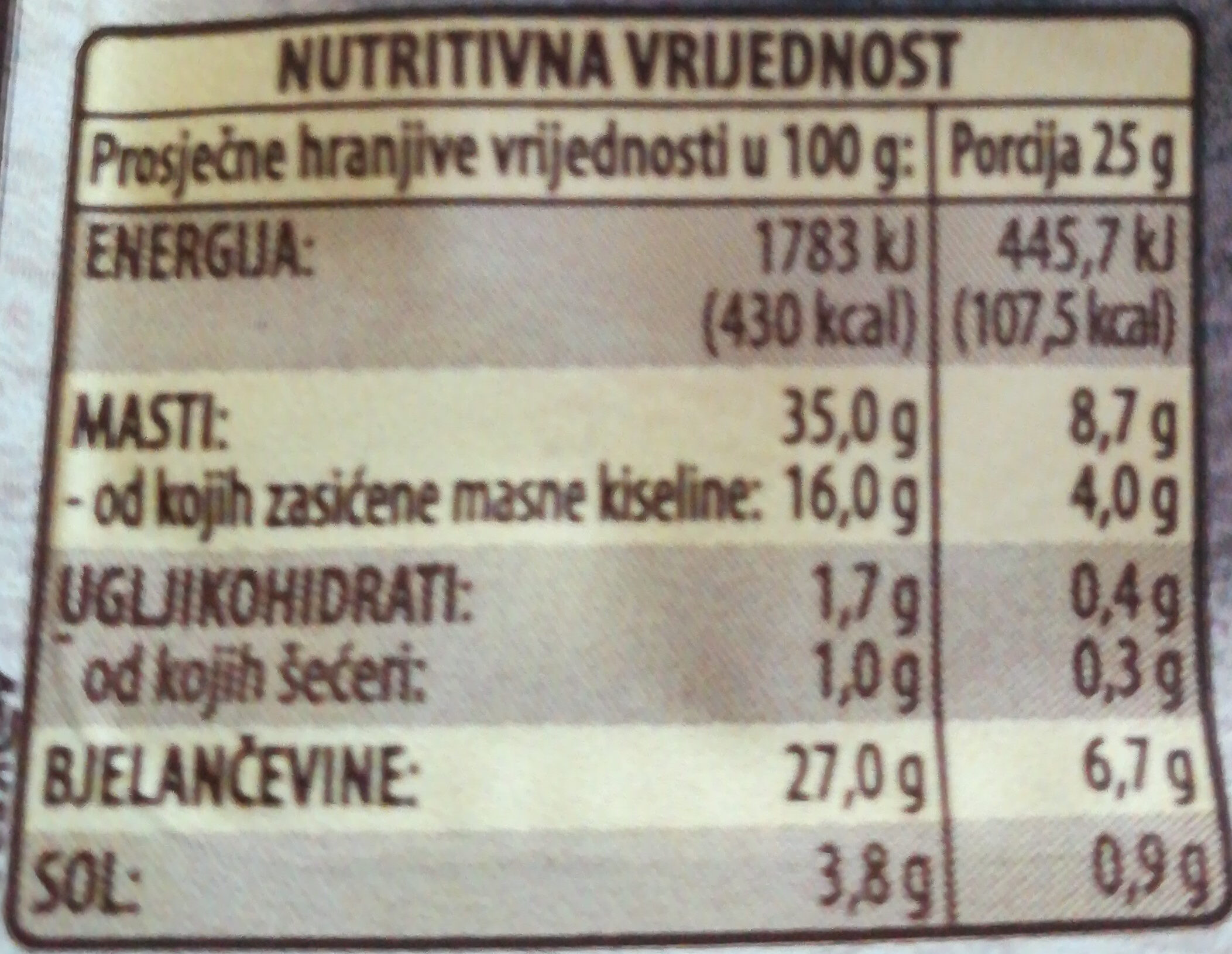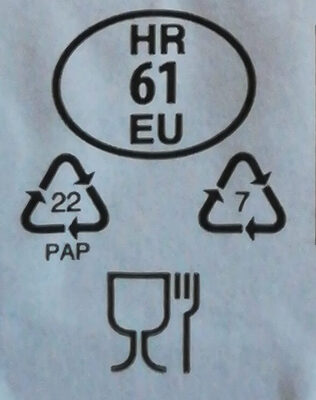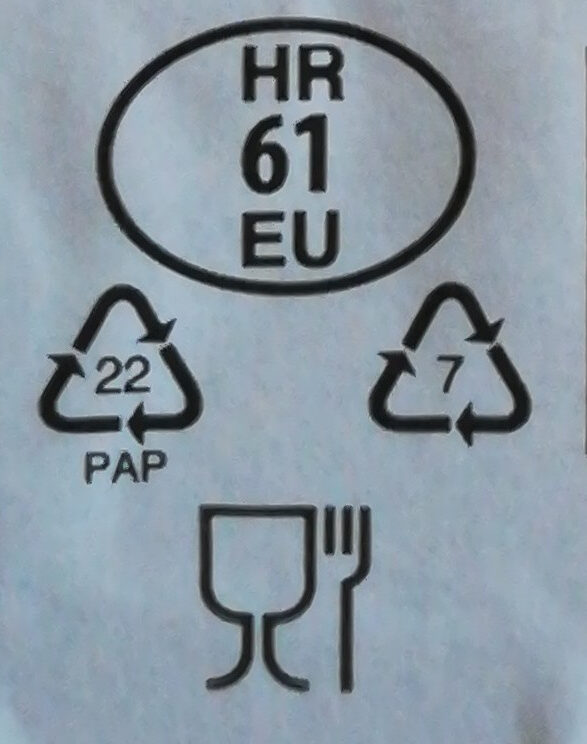Zimska - Rozeto - 80g
Barcode: 3850281937222 (EAN / EAN-13)
Quantity: 80g
Packaging: Plastic, Other-plastics, Paper
Categories: Meats and their products, Meats, Prepared meats, Cured sausages
Labels, certifications, awards: No gluten, No soy, Without allergens
Origin of ingredients: Croatia
Manufacturing or processing places: Hrvatska
Traceability code: HR 61 EU
Countries where sold: Croatia
Matching with your preferences
Report a problem
Data sources
Product added on by openfoodfacts-contributors
Last edit of product page on by benbenben.
Product page also edited by roboto-app.
If the data is incomplete or incorrect, you can complete or correct it by editing this page.
